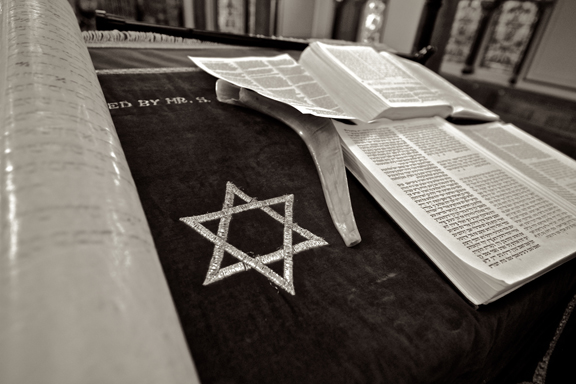Yesterday was the tenth of Tishrei, which is the most holy and important day in the Jewish year. The day, commonly called Yom Kippur (translating to Day of Atonement), is the day of remembrance and atonement for sins.
In the year 2448 from creation on the Jewish calendar (1313 BCE), the Israelites walked through the desert out of bondage in Egypt. Just months after their journey began, they took an idol to worship – a golden calf. God was not happy about this and invited their leader, Moses, to the top of Mount Sinai where he outlined his intentions and rules for his chosen people. Among the revelations from Mount Sinai came the two stone tablets of the Ten Commandments. After two 40-day visits to the mountaintop, God’s full favor and pardon were granted, and the day that Moses returned to his people – the tenth of Tishrei – was memorialized as Yom Kippur, a day of atonement for their sin of worshipping a false idol. Later that year, the Israelites built the Ark of the Covenant to house the Ten Commandments, and then the tabernacle (a mobile house of God) to house the Ark. When they returned to Jerusalem, the remembrance of the day continued every year. For generations, Jews flocked to the First Temple built by King Solomon to see the high priest performing his service, obtaining forgiveness for all of Israel for the coming year. When the temple was destroyed in 587 BCE a new one replaced it not long after, and Yom Kippur was held in that temple for hundreds of years. When the second temple was destroyed in 70 CE, the Jews decided to move the ceremony from the altar of a synagogue to the altar of the heart, where every Jew performs the sacrifice personally rather than one high priest offering sacrifices on behalf of all.
Each year on the eve of the ninth of Tishrei, atonement begins. This is done through what is called affliction – an abstention of certain activities like working, bathing, engaging in sex, applying lotion, wearing leather shoes, and eating or drinking – from the time that the sun sets on the ninth until the stars come out on the tenth of Tishrei. This time is spent in prayer at the synagogue, attending five prayer services throughout the day. Between prayer services, it is appropriate to recite Psalms at every available moment. It is a day for asking forgiveness from God for the sins of the year and throughout history. At the end of Yom Kippur, when the stars come out, it’s time to party. There is a feast and songs and after the blast of a shofar horn, everyone exclaims, “Next year in Jerusalem!”

